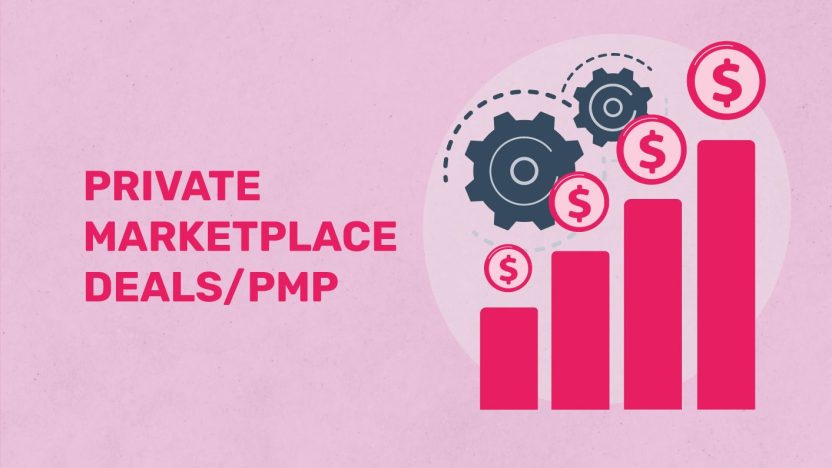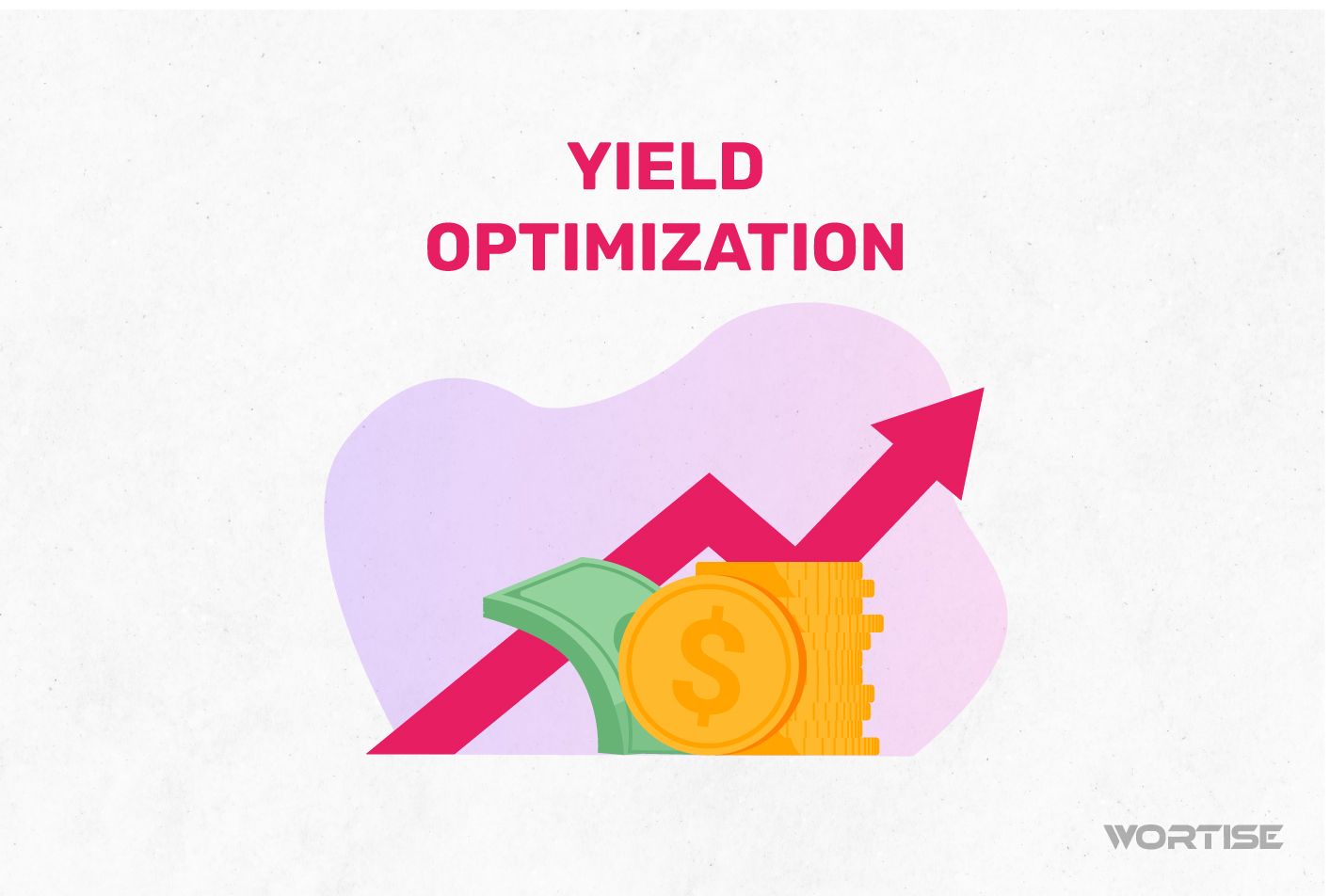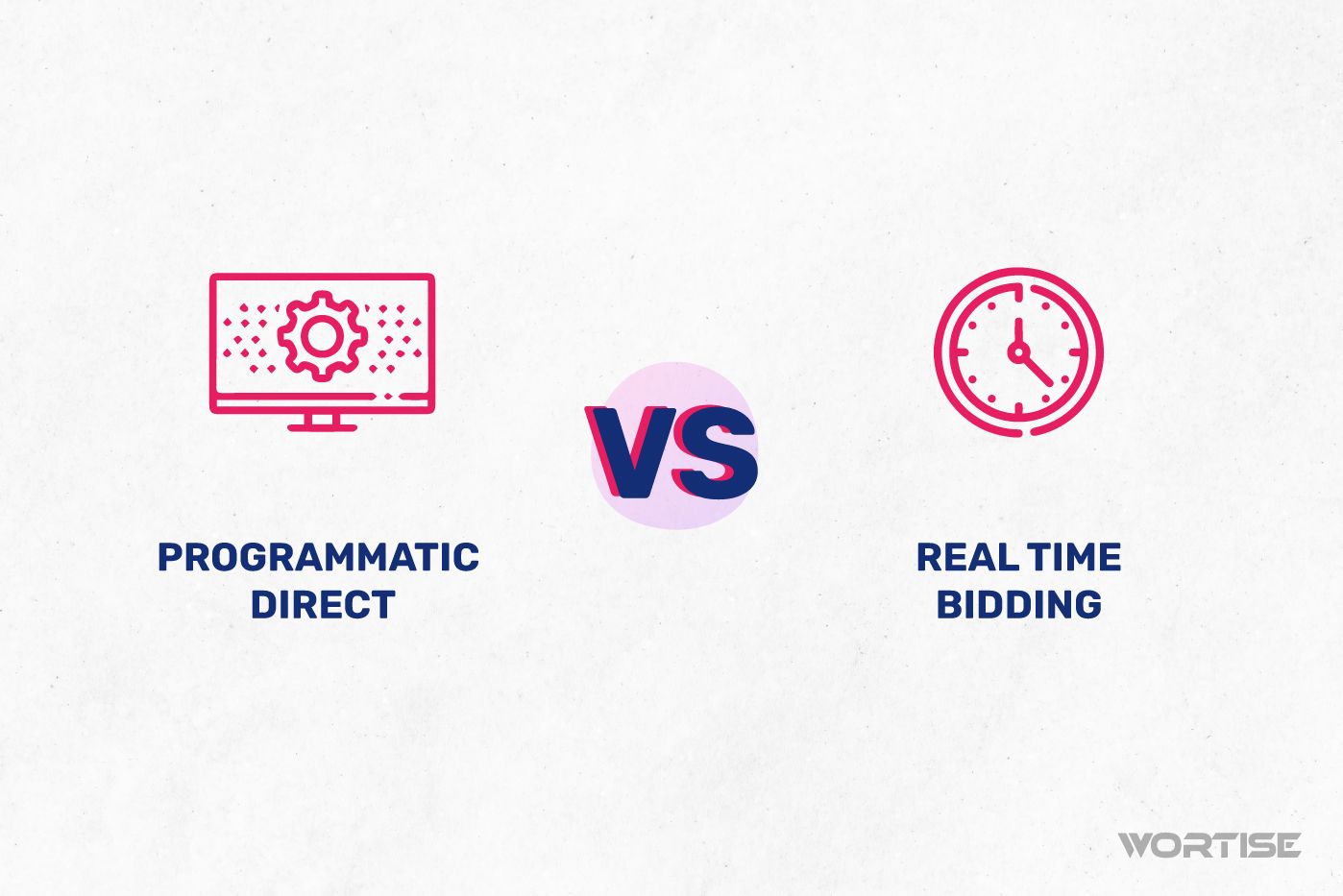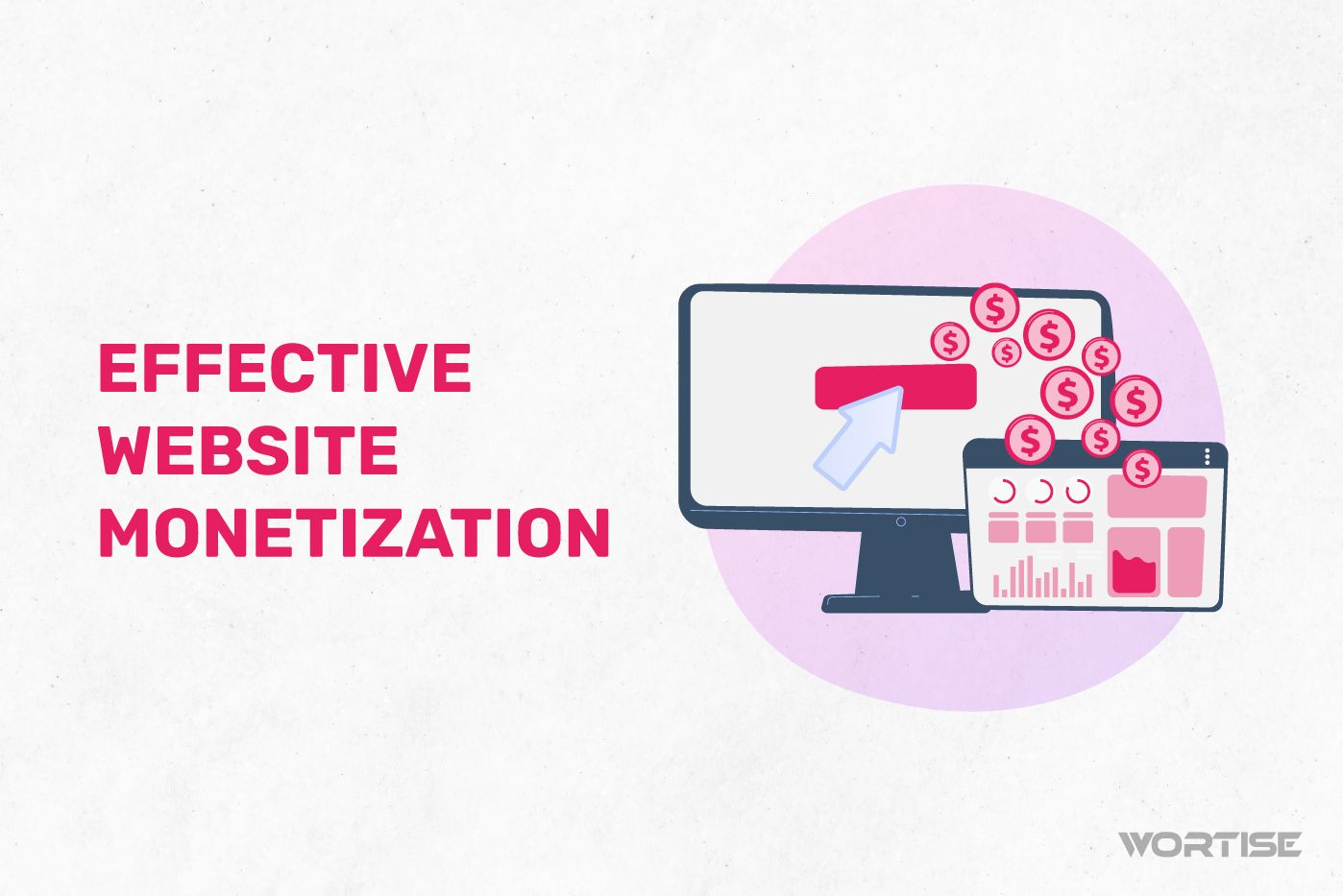If you have a Rolex and want to sell it to a specific buyer rather than anyone, you’re essentially trying to maximize your profits and ensure a transparent and secure transaction. That’s precisely what Private Marketplace Deals/PMP offers: providing you with the conditions to decide who buys your inventory and at what price.
Private marketplace deals have many benefits for publishers and advertisers. However, to fully leverage their features, it’s essential to understand how they work and what actions you can take to succeed. We’ll explain everything below.
What are Private Marketplace Deals/PMP?
Private Marketplace Deals (PMP) are a common type of transaction within programmatic advertising. Their purpose is to enable publishers and advertisers to establish direct agreements to buy and sell advertising inventory in a controlled, exclusive, and organized manner.
They are characterized by taking place in a more selective and restricted space (each offer is limited to a specific number of buyers), giving the publisher opportunities to configure their space only for selected advertisers. This working method is very different from open real-time auctions, which are usually public and open to any type of advertiser.
In short, Private Marketplace Deals (PMP) are an exclusive environment where publishers invite advertisers to participate in real-time bidding processes. Once the offer is configured, the buyer receives an invitation with the minimum price.
Each price is variable and negotiated based on the type of ad, quality, and audience.
How do Private Marketplace Deals/PMP Work?
In private marketplace offers, there is no anarchy or disorder; it is a space where control and organization prevail. Everything is perfectly configured to make monetization tasks efficient and attractive.
But how does a PMP really work? Although it may seem obvious, the first step is to choose an ad mediation platform that provides advanced monetization tools and functionalities.
Basically, this is the operating structure of PMP:
#1 Configuration
Publishers take the first step. They create a private market in an ad mediation and set parameters with the available inventory. Audience segments and minimum prices are also configured in this section.
#2 Invitation to Advertisers
Once everything is set up, the next step for publishers is to select advertisers with whom they want to enter into PMP agreements. An effective mediation platform allows for direct invitations (which is highly recommended), but negotiations can also occur through other means.
#3 Negotiation
At this point, both parties reach the most crucial point: the terms of the agreement. Here, price, impression volume, duration (days or months), and other points of interest are taken into account.
These terms usually change over time, considering the needs and goals of both publishers and advertisers.
#4 Configuration Implementation + Exclusive Access to Inventory
Before launching any ad, it’s necessary to configure the programmatic buying platform to reflect the agreed-upon terms. This includes inventory allocation, audience, and minimum prices.
Hence the importance of having a mediation platform that ensures that the agreement is carried out transparently and securely.
In addition, advertisers participating in the PMP can have exclusive access to the inventory they agreed upon and can make exclusive offers.
#5 Monitoring and Analysis
Not only can publishers monitor the performance of their inventory, but advertisers also have the option to continuously track and adjust their strategies if necessary.
If the segmentation used is not yielding results, continuous monitoring will enable informed decisions to improve. The same applies to the detailed reports available, which allow measuring click-through rates, conversions, and other relevant Key Performance Indicators (KPIs).
What Benefits Do Private Marketplace Offers Have for Publishers?
Investment in programmatic advertising is unstoppable. More and more companies and projects are joining this form of advertising to reach new audiences. In 2022 alone, the programmatic advertising market was estimated to exceed $7.3 trillion, a figure that could double in the next two or three years.
In the midst of such a dynamic market, it is estimated that in 2022, according to eMarketer studies, 17% of total programmatic advertising spending occurred through private marketplace deals.
There are significant figures at play and a series of benefits that we’ll show you below:
- Control over Inventory: Being able to select and define which advertisers have access to your inventory is one of the most significant advantages for a publisher. This acts as a filter, as each publisher ensures that the ads displayed in their app are relevant and of quality.
- Direct Relationship: In PMP, the possibilities of establishing more direct relationships with advertisers increase. This closer collaboration allows for a better understanding of advertisers’ needs and the implementation of personalized strategies.
- Better Segmentation: Targeting specific audiences increases the likelihood of finding premium advertisers whose products align with those of each publisher. The benefit is evident: better results in conversion rates, clicks, and ROI.
- App Reputation Management: As not everyone can advertise on your app, it is valid to consider PMP as a mechanism that allows you to protect the reputation and integrity of your app. You will avoid low-quality, obscene, or irrelevant content for your audience.
Benefits for Advertisers when Entering PMP Agreements
We’ve talked a lot about the benefits for publishers in PMP, but not as much about what a buyer can achieve in this private market. Here are some pros to balance the scales:
- Access to Premium Inventory: Each buyer can put their advertising to work on reputable sites, providing users with greater confidence and transparency. Premium inventories abound.
- Fraud Prevention: PMPs have advanced security policies and more comprehensive filters compared to open auctions. Therefore, an evident advantage is that the buyer is protected from advertising fraud.
- Know Where Ads are Displayed: Each advertiser can select a specific audience to target, ensuring that their ads are displayed in appropriate environments.
Shortcuts to Generate More Advertising Revenue with Private Marketplace Deals:
#1 Adapt to Market Changes
Private marketplace deals/PMP are dynamic and experience changes periodically. Each season, variations in CPM, bid rates, and inventory availability, among other aspects, are common.
Although traditionally the first and second quarters tend to be periods of lower activity in the programmatic advertising industry, investment in this area tends to increase significantly in the fourth quarter. Therefore, seasonality becomes a fundamental factor to consider when establishing PMP agreements, as it allows adapting to market fluctuations and taking advantage of opportunities for higher demand.
#2 Compare the PMP Market with Open Auctions
Given the effectiveness of PMP in reaching potential audiences, more and more advertisers are joining this form of advertising. However, before entering into any agreement hastily, it’s best to thoroughly analyze the market.
We suggest conducting a deep analysis of the value of your inventory in the open auction marketplace to avoid selling your space below market price and ensuring a much more advantageous CPM rate.
Remember, never take your eyes off real-time open auctions.
#3 Establish Competitive Prices
Keep in mind that there are other publishers trying to attract the best advertisers. Your offer may not be the only one a buyer receives, so make sure to set competitive prices that reflect the value of what you offer.
This not only speaks to your transparency as a publisher but also maximizes medium and long-term revenue.
#4 Improve Ad Visibility
While you, as a publisher, want to increase your advertising revenue, buyers are looking for apps that provide greater visibility. Perhaps, in open auctions, this issue may not be as high a priority, but in PMP, it’s everything.
You can achieve greater visibility by creating strategic segmentations based on geographical areas, interests, and browsing behavior. Optimize your app to the fullest and adhere to responsive design principles that are visually appealing.
#5 Leverage Audience Lists
In PMP, publishers have the option to share their own data with buyers, who can reserve inventories and ensure that each ad impression aligns with their audience list.
This allows publishers to offer an enhanced user experience and quality ads, while advertisers leverage their audience data during negotiations.
#6 Include Relevant Ads
Don’t let the desire to monetize quickly lead you to negotiate low-quality ads. It’s proven that client-side header bidding increases matching rates, and depending on the platform you use for advertising, it’s possible to display ads in a specific section of the application.
#7 Formats and Creatives
Video formats generate more prominent results than display ads. However, it’s crucial to diversify your inventory and display different types of formats to avoid audience fatigue and achieve the goal: increasing cost per thousand impressions (eCPM).
Consider banners, native ads, interstitials, geo smarts, and other formats that make advertising appear less forced.
#8 Choose a Reliable Platform
Applying all the hacks we’ve provided will be more manageable if you have a mediation platform that offers opportunities to connect with premium buyers, performance metrics, segmentation tools, inappropriate content detection, and timely support.
Let’s Talk About PMP Deal IDs: How to Configure Them
To operate in the private market, you need a Deal ID, which is essentially a string of characters that defines the minimum price and other relevant offer data.
With a Deal ID, publishers can offer advertisers a selected part of their inventory by invitation only. Additionally, the Deal ID is crucial for connecting with demand-side platforms (DSPs).
Here’s what a Deal ID should contain for proper configuration:
- Buyer Advertiser Name
- DSP
- Start and End Date of the Agreement
- Buyer ID
- Targeting and Limitation Settings
- CPM Price
- Audience Segmentation
- Inventory to Be Run
Deal IDs enhance trust and control levels between the parties.
Reach the Best Private Marketplace Deals with Wortise and Generate More Profits
Hello, Publisher! Finding premium advertisers in private marketplace offers doesn’t have to be complicated. While you focus on coding, we help you connect with premium buyers to maximize the value of your inventory.
At Wortise, we help you increase your revenue as a publisher with our advanced ad network platform with over 100 Ad Networks.
We provide personalized support, the highest eCPM in the market, and guidance on tactics to maximize your earnings.




